#John Steppling
Explore tagged Tumblr posts
Text
Lost, but Not Forgotten: What Price Beauty? (1925)

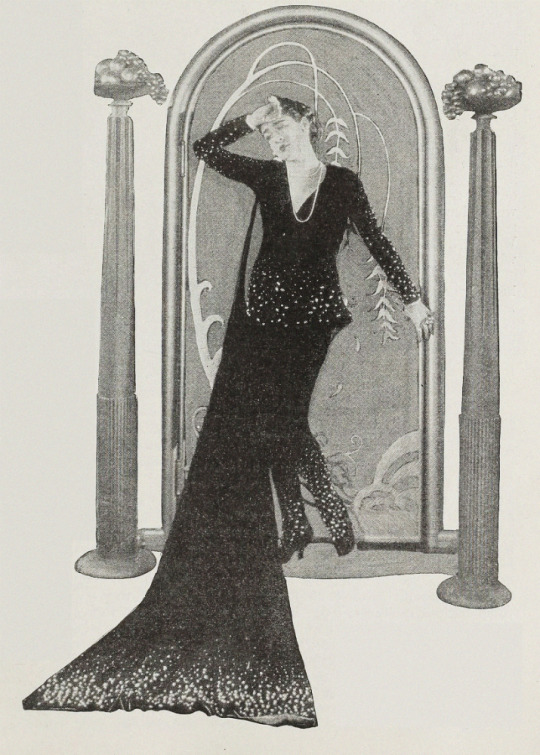
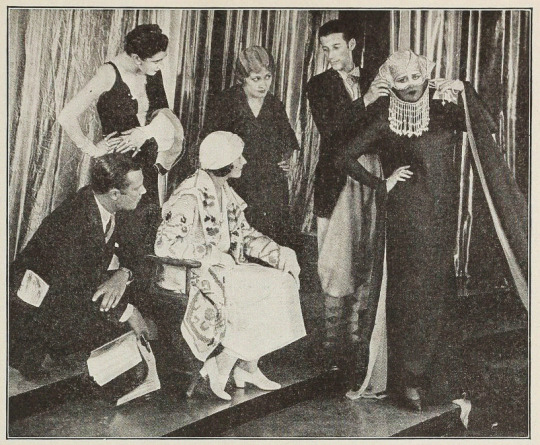
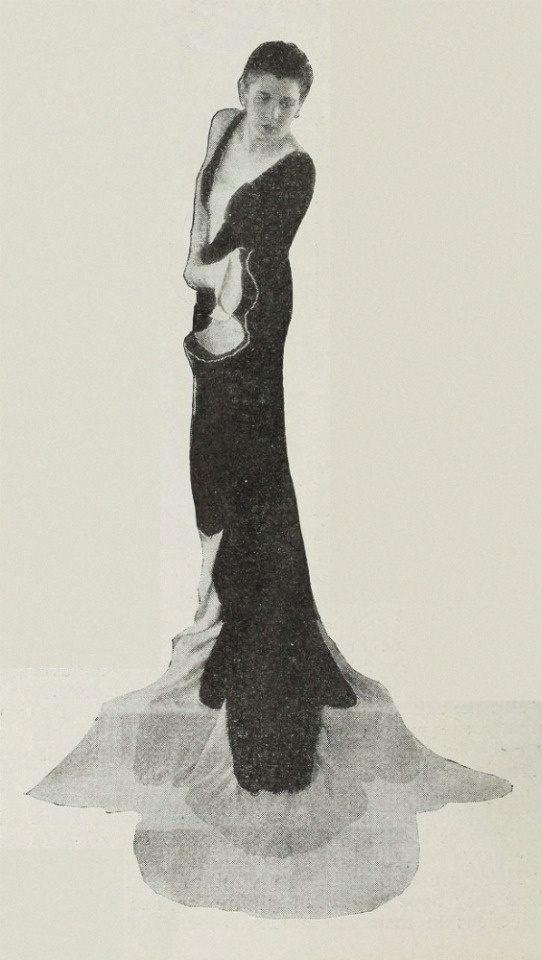
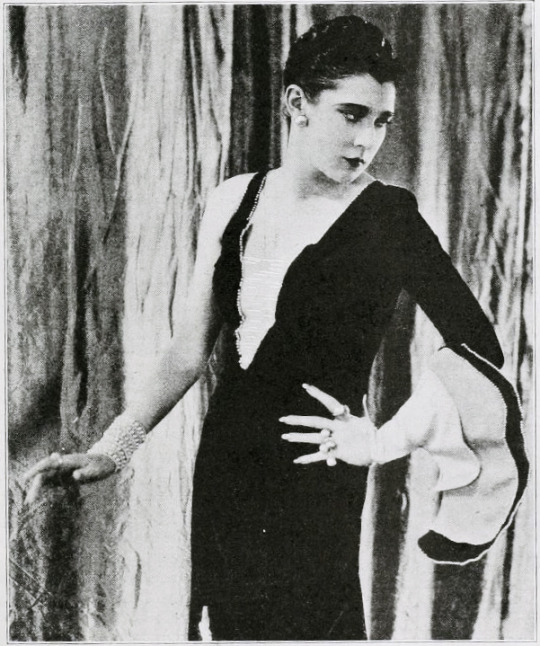
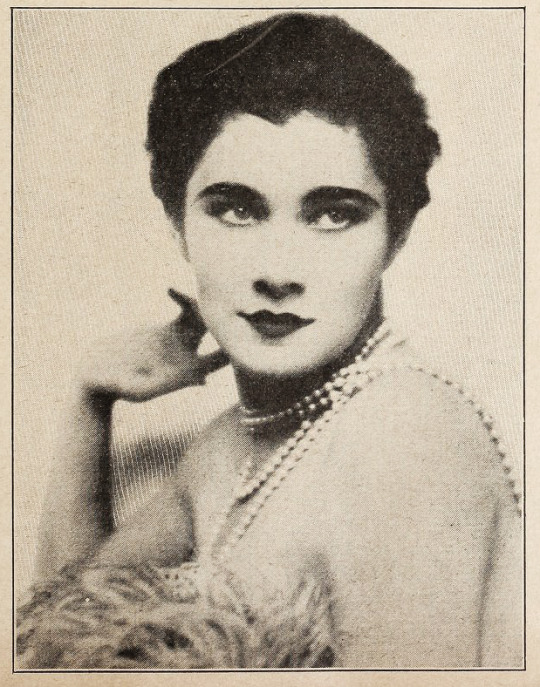


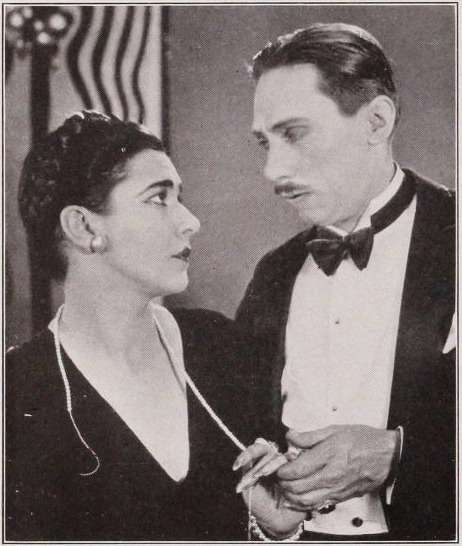
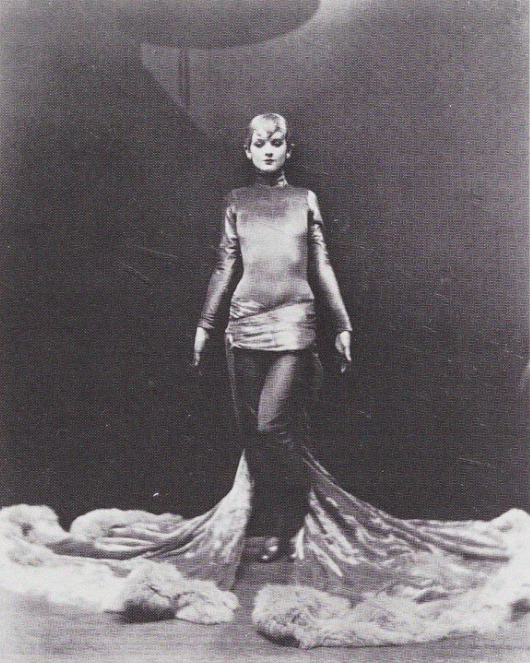
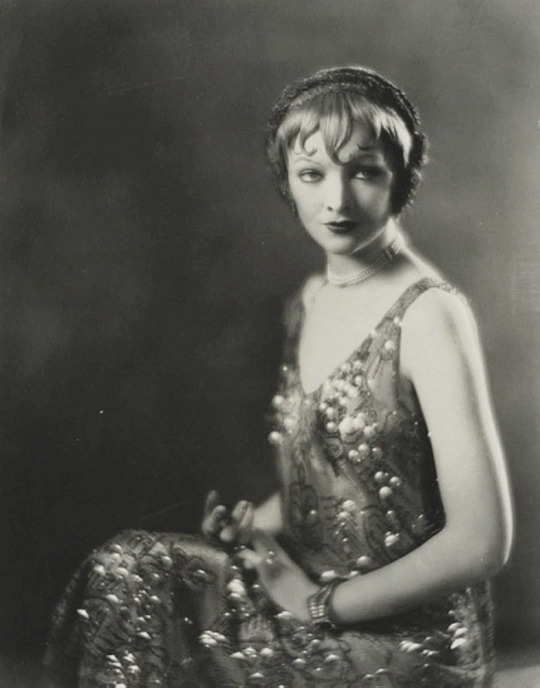
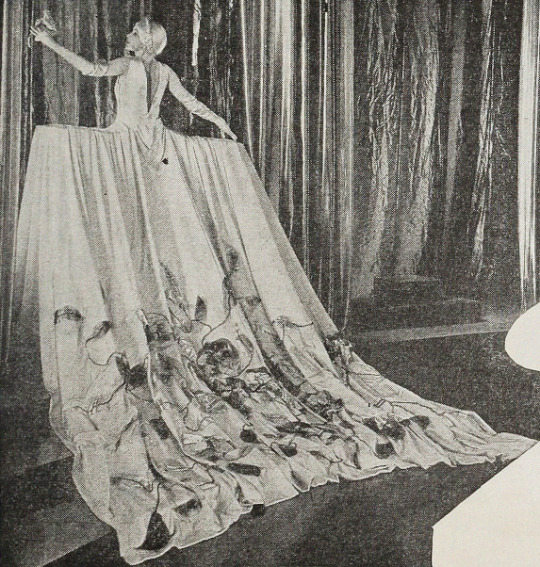
Direction: Thomas Buckingham
Scenario & Story: Natacha Rambova
Titles: Malcolm Stuart Boylan
Production Manager: S. George Ullman
Camera: J. D. Jennings
Art Direction: Natacha Rambova
Production Design: William Cameron Menzies
Costume Design: Adrian
Studio: Circle Films (Production) & Pathé Exchange (Distribution)
Performers: Nita Naldi, Pierre Gendron, Virginia Pearson, Dolores Johnson, Myrna Loy, Sally Winters, La Supervia, Marilyn Newkirk, Victor Potel, Spike Rankin, Rosalind Byrne, Templar Saxe, Leo White Maybe: John Steppling, Paulette Duval, Dorothy Dwan, and Sally Long
Premiere: None, general release: January 22, 1928
Status: Presumed entirely lost.
Length: Variously reported as 5000 and 4000 feet (more commonly listed as 4000) or 5 reels
Synopsis (synthesized from magazine summaries of the plot):
Mary, a.k.a. “Miss Simplicity” (Dolores Johnson) is a starry-eyed, country-to-city transplant. She works at a beauty shop operated by a glamorous matron (Virginia Pearson) and owned by the young and handsome Clay (Pierre Gendron).
Mary is in love with Clay, but doesn’t have the nerve or feminine wiles to woo him. The uber-sophisticated Rita (Nita Naldi), however, is chock full of nerves and wile. Rita’s fancy clothes and perfumes and advanced flirting skills leave Mary feeling destined to fail at winning Clay’s amorous attention.
These feelings sublimate into an expressionistic dream for Mary, where she finds herself transformed into a sophisticate like Rita. Her boss is seen as a magnificent wizard, converting her clients into archetypes of glamour: exotic types, flappers, and sirens. Her competition, Rita, is seen as a bewitching spider.
In the end, surprising Mary, it turns out that her fresh-faced, unassuming charm is more appealing to Clay than Rita’s more practiced charm.
Additional sequence(s) featured in the film (but I’m not sure where they fit in the continuity):
Scene of the trials and tribulations of a fat woman trying to “reduce”
Points of Interest:
Only one quarter of Nita Naldi’s Hollywood films have survived (7 extant titles/21 lost or mostly lost titles).
——— ——— ———
What Price Beauty? was the first and only film produced under Natacha Rambova’s own company. Coordinating production for the film was the business manager for Rambova and her husband Rudolph Valentino, S. George Ullman. The couple met Ullman when he was working for Mineralava beauty products, the sponsor of their 1922-3 dancing tour.
When Rudolph Valentino entered into a contract with United Artists, said contract reportedly stipulated that Valentino-Rambova were not a package deal. Therefore, Rambova could not collaborate with Valentino on his productions for United. Possibly as consolation, Ullman funded a production for Rambova while Valentino worked on The Eagle (1925, extant).
For Rambova, What Price Beauty? was meant to be a proving ground for her idea that an artistic film could be made on a modest budget. She also wished to remind people that she was a skilled artist in her own right.
In an interview in Picture Play Magazine from August 1925, Rambova asserts:
“…I do not want the production in any sense to be referred to as high-brow or ���arty’. My reputation for being ‘arty’ is one of the things that I have to live down, and I hope by this picture, which is a comedy—even to the extent of gags and hokum—to overcome that idea. “A woman who marries a celebrity is bound to find herself in a more or less equivocal position, it seems, and her difficulties are only increased when she happens to have had some artistic ambitions of her own before her marriage. I am afraid that those who have accused me of meddling in my husband’s affairs forget that I enjoyed a certain reputation and a very good remuneration for my work as well before I became Mrs. Valentino.”
“What I desire personally is simply to be known for the work which I have always done, and that has brought me a reputation entirely independent of my marriage.”
There isn’t a vast amount of information on what exactly prevented WPB from gaining release in a timely fashion. If the film was truly nothing more than a ploy to separate Rambova from Valentino, that would be an absurd waste of time, money (~$80,000 in 1925 USD), and talent—Rambova employed soon-to-be famous designer Adrian for costumes and William Cameron Menzies for set decoration. Not to mention that, in front of the camera, Nita Naldi was still a popular star and the Rambova discovery, Myrna Loy, made her quickly hyped debut.
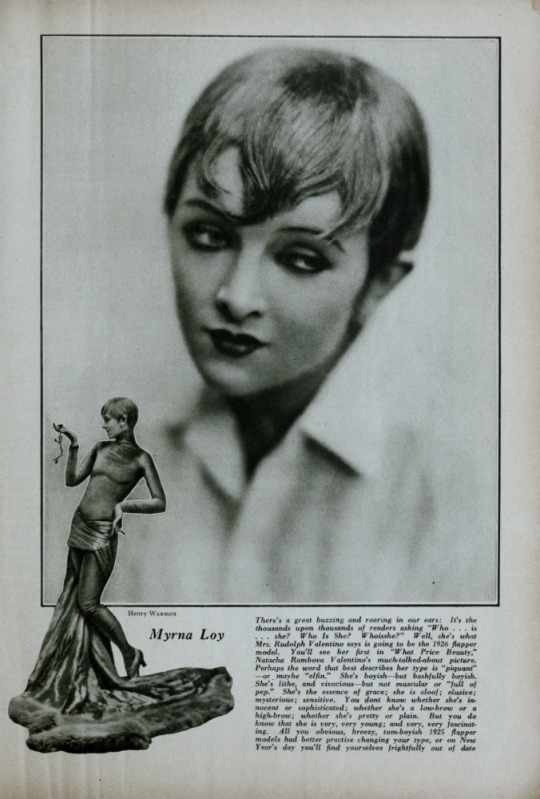
When Pathé finally purchased WPB for distribution in 1928, they did very little to promote the film. Naldi had moved on from the film industry—as had Rambova. And, while Loy hadn’t become the huge star we know today by January of 1928, Warner Brothers had already given her top billing in a number of films. Pathé barely mentions Loy’s role in the little promotion they did do.
To put WPB’s release in the context of Rambova’s personal/professional biography (which you can read more about here):
June/July 1925 – WPB is completed, Rambova and Valentino separate (in July according to Rambova’s mother as quoted in Rambova’s book Rudy)
August 1925 – Rambova leaves Hollywood for New York City, reportedly to negotiate distribution for WPB. She and Valentino would see each other in person for the last time. Rambova leaves NYC for Europe.
September 1925 – Valentino draws up a new will disinheriting Rambova
November 1925 – Rambova returns to the US to act in a film, When Love Grows Cold (1926, presumed lost), a title which Rambova objected to
December 1925 – Rambova files for divorce
August 1926 – Valentino dies
January 1928 – WPB is finally released with no fanfare by Pathé
In my research for my Rambova cosplay, the suspicious production/release history for this film stood out to me. I hoped that I might find some reliable evidence of whether WPB was a consolation prize and/or a scheme to keep Rambova and Valentino apart. Honestly and unfortunately, circumstantial evidence does support it!
After poring over what few contemporary sources cover WPB, there seemed to be no plan in place for distribution as the film was in production. United Artists, at whose lot the film was shot, claimed to have nothing to do with its release. Ullman had a news item placed about negotiating the distribution rights in the East. However, in Ullman’s own memoir, he admits that when he travelled to New York with Rambova, it was in a personal, not professional capacity—navigating the couple’s separation. (Ullman’s book contains many disprovable claims and misrepresentations, so anything cited from it should be taken with a grain of salt.) That said, Ullman’s failure to secure even a modest distribution deal for WPB in a reasonable timeframe speaks to how ill-founded Valentino’s and Rambova’s trust in his business acumen was.
WPB cost $80,000 to produce, which converts to $1.4 million in 2023 USD. While that wasn’t an outrageous budget for a Hollywood feature film at the time, especially one with such advanced production value, it’s certainly an absurd cost if the goal was only to separate a bankable star from his wife and collaborator.
A close friend and employee of Valentino and Rambova, Lou Mahoney, recalled in Michael Morris’ Madam Valentino:
“The picture was previewed at a theater on the east side of Pasadena, and Mahoney remembered the audience reaction as positive, but, thereafter, What Price Beauty? was consigned to oblivion. Mahoney knew why: ‘No help came from anyone, no thoughts of trying to get this picture properly released. No help came from Ullman, Schenck, or anybody else. Their whole thought was that if the picture were a success, Mrs. Valentino would be a success. She would then start producing under the Rudolph Valentino Production Company. But this nobody wanted—except herself, and Mr. Valentino.’”
——— ——— ———
The few reviews from 1928 that I was able to find are not very complimentary of WPB. The critics seem thrown by the film’s tone or genre—reading it as a drama. (Part of that is Pathé’s fault as they listed it as one.) But, according to sources contemporary to WPB’s production, it was intended to be a farcical satire of the beauty industry and social expectations of feminine beauty. Given the simple story, the intentional typage of characters (“The Sport,” “The Sissy,” and “Miss Simplicity”), and the over-the-top-but-on-a-budget art design of WPB, all signs point to high camp. In 1925 as well as 1928, the stodgier side of the critical spectrum would likely fail to see its appeal.
It’s a true shame we can’t find out for ourselves how good, bad, or campy WPB was as of yet, but here’s hoping the film resurfaces!
More about Rambova
GIFs of some of her design work on film
☕Appreciate my work? Buy me a coffee! ☕
Transcribed Sources & Annotations over on the WMM Blog!
#1920s#1925#1928#natacha rambova#nita naldi#cinema#silent cinema#american film#independent film#classic film#classic movies#film#silent film#silent movies#silent era#classic cinema#silent comedy#lost film#film history#history
24 notes
·
View notes
Text
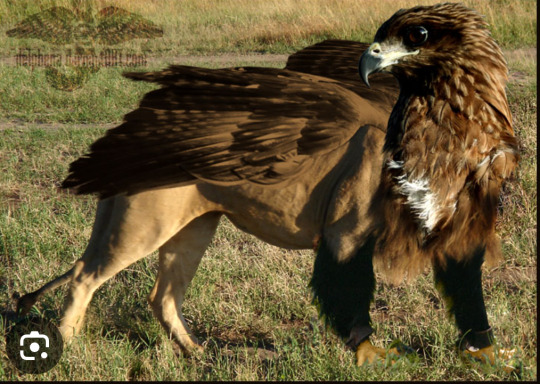
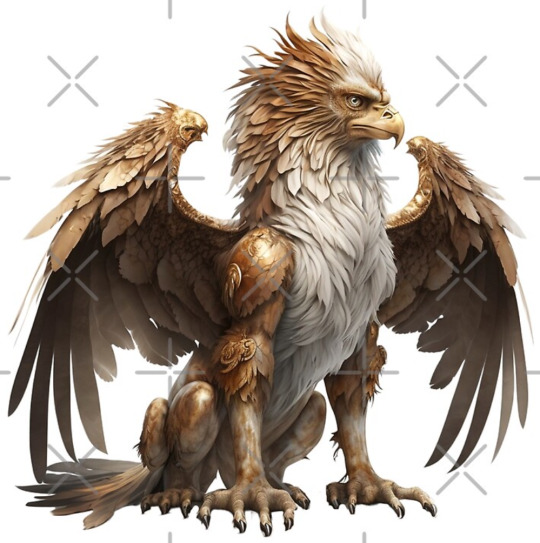

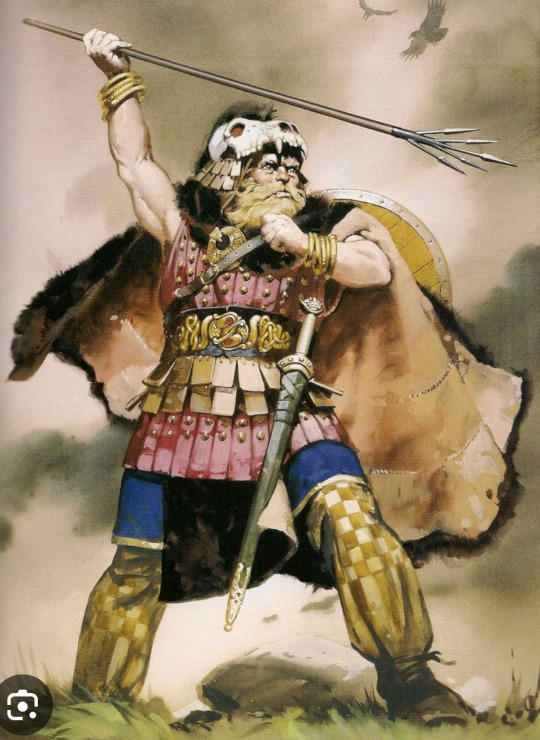



Pics:
1 & 2. Modern renditions of 'realistic' griffins¹. Like dragons, they were supposed to guard loads of gold!
3. Simple diagram that places the Greek mythic 'world' at the extremes - away from the Mediterranean Sea.
4. Drawing of what a Hyperborean² supposedly looked like.
Reminds me of the much later Viking raiders...
5. The face of the 1-eyed Arimaspian³ 'people.'
They were mounted warriors who sought out & fought over griffin gold.
It looks like a Hindu god with its 3rd eye (of wisdom) open...
Hmm.
The idea of griffins did come from India...
6. John Milton⁴, extraordinary British poet - in the 1600s.
7. Collection of Milton's epic Biblical poems!
1914: Output.
Intro: "Gryphus in Asinum Mutatus⁵" is the last poem that Lovecraft wrote in 1914.
It takes Howard back to his early childhood, when he read Ovid's "Metamorphosis" & HPL thought that he was a 'real' pagan.
Lovecraft actually believed that he saw a satyr (man-goat) & a nymph (minor nature goddess) in the back lawn of his grandad's mansion!!
Howard was so inspired that he wrote several short poems.
One about the Roman's (Ovid) work, another on the ancient Greek Iliad & the last on the Odyssey.
But, this 1914 work claims to show how a griffin turned out to be a real ass...
It's an amusing satire based on Ovid's idea of eternal, magical 'changes' thru out time.
And, it does show off HPL's deep knowledge of classical mythology & English verse.
It's a little known effort, nowadays.
With little professional commentary.
The Work, Part 1: Lovecraft's intro!
(Howard introduces the idea of a griffin, where it came from & gives a quote from Milton's 2nd book of "Paradise Lost⁶.")
(HPL also mentions "the Blarney⁷ or North Carolinian species" - of the North American donkey⁸!)
A gryphon or griffin is a mythic animal with the body of a lion - plus, the head & wings of an eagle.
Such griffins dwelled in the Riphaean Mountains⁹, which were situated north of Scythia (Asian stepple area), between the blessed Hyperboreans & the 1-eyed Arimaspians.
These mounted cyclopes¹⁰ attempted to steal that gold, an action that resulted in the hostility between horses & griffins!
Milton, in his 2nd book of "Paradise Lost," refers to:
"A griffin thru the wilderness, winged... over hill & moor(-like) dale..."
"Pursues... (an) Arimaspian, who by stealth, Has from (the Griffin's) custody, purloined it's guarded gold."
Next: Part 2, Notes.
3 notes
·
View notes
Text
Why the Brutal Crackdown on Anti-Genocide Protests?
Norwegian playwright John Steppling and I respond on Press TV’s News Review — Read on kevinbarrett.substack.com/p/why-the-brutal-crackdown-on-anti
View On WordPress
0 notes
Text
100 year old film
Bell Boy 13 Jan 19, 1923
Bell Boy 13 is a 1923 American silent comedy film directed by William A. Seiter, and starring Douglas MacLean, John Steppling, Margaret Loomis, William Courtright, Emily Gerdes, and Eugene Burr. The film was released by First National Pictures on January 19, 1923.

Douglas MacLean was an American stage and silent film actor who later worked as a producer and screenwriter in the sound era . Born in Philadelphia, MacLean was educated at Northwestern University and Lewis Institute of Technology in Chicago. He went on to appear with Dorothy Gish in The Hun Within, and he co-starred with Doris May in the romantic comedy 23 1/2 Hours' Leave, which was a big hit.
From 1922 to 1929 he starred in 14 other features for Paramount and First National, all maintaining the standard light romantic comedy formula that proved successful for him.


MacLean was a popular actor of his time. His films were well-received by audiences and critics alike. Bell Boy 13 was one of his most successful films. It was praised for its humor. MacLean's performance as Harry Elrod was also highly appreciated by the audience.

The film follows the story of college graduate Harry Elrod (MacLean) who wishes to marry actress Kitty Clyde (Loomis), but his Uncle Ellrey Elrod (Steppling) has picked out Angela Fish (Gerdes) as a wife for his nephew. Harry arranges an elopement with Kitty. His uncle's suspicions are aroused and he trails Harry continuously. Harry receives a telegram from his uncle, disowning him. Broke, Harry takes a job as a hotel bell boy.


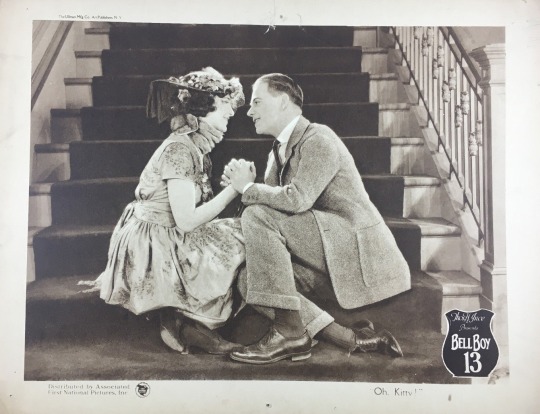
Although almost completely forgotten today, Douglas MacLean was a talented actor who made significant contributions to the film industry. Bell Boy 13 is a testament to his acting prowess and remains a classic silent comedy film to this day.
Douglas MacLean - Wikipedia
Bell Boy 13 - Wikipedia.
https://en.wikipedia.org/wiki/Bell_Boy_13.
Bell Boy 13 (Short 1923) - IMDb.
https://www.imdb.com/title/tt0013866/.
#silent comedy#silent film#silent cinema#silent era#Douglas McLean#Bell Boy 13#100 years ago#100 years old#silent movies
0 notes
Quote
Young men like to tinker with motorcycles or weapons, or DIY building projects. Leisure time is taken up with imitations of work, but they feel as if they were freely chosen, hence owned. It must be clear by now that technology developed along lines determined by the ruling class. All that the working class can own today are facsimile versions of their own domination.
John Steppling
0 notes
Text

In autumn of 1977, I returned to Los Angeles after a swirl of festivals with Angel City and Last Chants for a Slow Dance. By chance I met with a friend, whose floor I was crashing on in Venice, over a meal with Michael Crichton’s sister, two wanna-be producers. They said they were hot to make a movie, and could readily raise $35K, in Hollywood at the time nothing, but for me a fair bit. [I shot the film in 16mm and made a 35mm blow up for that budget, at the time a miracle of economy.] The following period equaled a nightmare, but out of it came Chameleon which went on to a mess of festivals, and suggestions that Hollywood would soon be knocking at my door. Had they ever seen or understood Angel City or Chameleon, one would think not. The experience of making Chameleon, at however a low level, turned me off any interest whatsoever in working there or in the film business.
CHAMELEON
1978, 16mm blown to 35mm, color/snd, 90 minutes
Produced, written, directed, photographed and edited by Jon Jost. With Bob Glaudini, Nick Richardson, Lee Kissman, Kathleen McKay, Ellen Blake, Norman Gibbs, Fox Harris, Lola Moon, Winifred Golden, Gene Youngblood, and others
Shown at Taormina, Toronto, Sydney, Melbourne, US (now Sundance) Best of Fest, 1978; Edinburgh Festival, Deauville, Florence 1979; and others.
Broadcast by UK’s C4, 1982

A scathing portrait of the Hollywood/LA arts milieu of the late 70’s, Chameleon follows the amorphous day of its lead character, an Armani-jacketed tony peddler of high-class dope, fraudulent art, and preening postures suit-to-fit the victim.
Critics comments:
“Jost’s Chameleon cost a mere $35,000 to make (including the 16 to 35mm blowup) and is a triumph of artistry over budget. Jost’s day in the life of a lean, mean Los Angeles hustler (Bob Glaudini) is a cautionary tale about the self-destructiveness of American opportunism. The main character – hero or villain, according to taste – moves reptilelike through a land of easy-prey gullibility, sucking dry his victims and his own humanity alike. The film is packed with bold visual metaphors. When a gun is fired, the whole screen explodes into white; when the hustler changes his “act” for different clients, the screen, chameleonlike, changes its colors. Chameleon is a nervy, intelligent, exciting advance on Jost’s last film, Angel City.”
Nigel Andrews, American Film
“…but I also like the film because Bob Glaudini’s performance as Terry is absolutely riveting (why this man isn’t better known I’ll never understand) ; because Jost seems to have captured, more or less exactly, the kind of California life-style that makes a convention of the unconventional, and because Jost’s inventiveness, undoubtedly born out of necessity, has an irrepressible edge to it that stops pretension in its tracks. In a way he is the American Wenders, equally attracted to but critical of Hollywood prototypes.”
Derek Malcolm, Guardian
“Jon Jost’s Chameleon was probably the happiest instance of a mixed marriage at the Festival (Edinburgh 1979): combining a freak, trippy (in fact almost Corman-esque) saga of a dope-dealer and all-round hustler with an abstract distillation of patterns of color and light. The place of the latter in the film is both somewhere within the drug-laced nimbus of its title character, Terry (Bob Glaudini), and somewhere outside its ironic description of the rampant merchandising of all other human activities. In a way, this abstract element almost serves as a secondary narrative, or at least becomes the ‘point’ of the film. At the beginning, Terry is seen hustling a painter of just such abstract designs to come up with six imitations of another painter which he can unload on the art market. With some ‘persuasion’, Terry overcomes the painter’s reluctance, and at the end of the film returns to collect his merchandise. But the rolls of paper his is given turn out to be blank, and the painter defiantly protests, ‘My life is color, form, the shape of things…’ before Terry knocks him down and leaves him lying in a pool of spilled colors that returns us to the abstracts which were shown in detail in the opening shots. It is probably not too deterministic a reading to see Jost as the painter and the blank sheets as the conventional movie which he has refused to provide for audience consumption.
But in between, his narrative not only holds together but unfolds through a fascinating succession of moods as Terry drives about LA, moving from appointment to appointment, from role to role. At one point, at the end of a long sequence in which he seems to be renewing a personal acquaintance on a hilltop some way outside the city, he and his companion go into a brief song and dance (I want to be phony, I want to be fake, not real:). The unreality of Los Angeles clearly serves as a prime cause, and natural cradle, for the dreaming of cocaine dreams, and through it Jost even makes contact with a literary source.. Terry refers to science-fiction writer Philip K. Dick and comments, “This feller seemed like a casualty straight from his pages.”
Richard Combs, American Film
https://vimeo.com/ondemand/chameleon2
LA Again: Chameleon In autumn of 1977, I returned to Los Angeles after a swirl of festivals with Angel City…
1 note
·
View note
Text

( PROMPT. ) @kenneld said, ❝ I did what was necessary, ❞
“Mm.”
The wind cuts between the trees, spindled limbs stiff and dry from the Autumn chill. It muffles the acknowledgement that drifts from his ruined lungs; the bellows of his chest heave silently against the crisp gale that skirts the eastern face of the mountain, and he is content to let its shrill howl swallow the rumble of his voice.
The grunt is a perfunctory gesture, a rasp against his throat — he’s being too generous with it, perhaps. Recognition is not the goal. Praise begets vanity, and vanity lends itself to pride. There are moments where it still stings, the needle of John’s tattoo gun against his shoulder; his little brother had ensured that he would never again forget his arrogance, that greatest of pitfalls.
“ Pride goeth before destruction, and a haughty spirit before a fall. “
Joseph’s voice rings in his ears like the bells in the stepple of the chapel on their humble island. Hollow and made of tarnished brass, but echoing out the most beautiful melody each morning. We can hear it from across the river — d’you know that, Joe? It carries through the mist and some mornings I think I could swim across the Henbane just to hear it better. Just to hear you better.
Jacob has been called to something higher, to keep those under his tutelage on the same path the Father has laid out for them. Soldiers do not give into temptation, nor to impulse. He does not think of himself when he looks down upon the boy, smoke coiling from a rifle nearly as long as he is tall. He thinks of his brothers — of Joseph at his pulpit, and John on his podium. He thinks of the countless faces that Joseph preaches to, thinks of the hope in their eyes. He thinks of the tears that flow freely when John pulls the contrite from the Henbane, hands clasped against their damp faces, congratulating them for bowing down before the will of a higher power.
He does not know if he believes in any sort of god — but Jacob Seed does believe in his brothers.
"That you did.”
It is rare, for him to grant such an open acknowledgement. Approval is a scarcity, a commodity more precious, perhaps, than gold. This is not the point, of course — but even he cannot help but to notice the way steel turns to silver in the boy’s eyes when his good deed is acknowledged.
“Go on.” Jacob rises from the underbrush, a rifle slung over his own shoulder as a fallen doe pitches and bleats further up the ridge, bleeding into the frozen Montana soil. Truth be told, he couldn’t care less about the animal, about the pain it cries against as it kicks its clumsy hooves through briar and scrub. He cares only for what the child beside him does next.
“Put the thing out of its misery.”
Don’t make me tell you again.

#kenneld#the first piece of in-character writing for my one and only beloved#as god intended#ber: *is baby*#jacob: what this fuck this wasn't in my training manual#〉 VERSE II ₎ wash away your sins.#〉 KENNELD ₎ thread i.
7 notes
·
View notes
Quote
The U.S. military hides statistics on its petroleum usage and its disposal of chemical waste, and of course the severe consequences of all the current ongoing U.S. wars (see Cholera in Yemen just for starters). The socio-political landscape is seeing the rise of global fascism as well as a continuing migration of wealth to the very top tier of the class hierarchy. Homes are being built with servants quarters for the first time in over a hundred years. It is a return to both Victorian values and social structure and in a wider sense a return to feudalism. The homeless camps that circle every American city speak to the extreme fragility of the social fabric in the West today. A fragility that both planned and exploited by the ruling classes.
John Steppling, June 2019
1 note
·
View note
Link
Commentator John Steppling and his insightfulness is featured here. Ignore headline.
0 notes
Text
"If You're Reading This, You Might Be A Conspiracy Theorist..."
“If You’re Reading This, You Might Be A Conspiracy Theorist…”

[ad_1]
Authored by John Steppling via Off-Guardian.org,
“…a permanent modern scenario: apocalypse looms…and it doesn’t occur.”
– Susan Sontag, AIDs and its Metaphors
“I should not misuse this opportunity to give you a lecture about, say, logic. I call this a misuse, for to explain a scientific matter to you it would need a course of lectures and not an hour’s paper. Another alternative would…
View On WordPress
0 notes
Text
Patrisse Cullors And Reform L.A. Jails Hold Summit, Day Party to Discuss Incarceration and Mental Health
This Saturday, Reform L.A. Jails and their founder/chair, activist, public speaker, and co-founder of Black Lives Matter Global Network, Patrisse Cullors, held a triumphant event to raise awareness about mass incarceration and mental illness. The event, also an opportunity to educate people about L.A County jail reform, encouraged the local community to vote “yes” on the Reform L.A. Jails measure that will be on the California presidential primary ballot (March 3, 2020). Held at A Noise Within Theatre, the event included powerful programming, a special performance by rising Compton rapper Boogie, a world-class art exhibition, and more.
The event began with Patrisse Cullors making her opening remarks on bringing L.A. County together for one day in support of mental health reform leading into a discussion between running District Attorney candidates Richard Ceballos, George Gascon, Joseph Iniguez and Rachel Rossi on how each candidate will work to decriminalize mental illness. Cullors moderated each panel throughout the event. The very first panel focused on mental health and incarceration where the history of institutionalization and the increase of mentally ill inmates was discussed. Panelists included actress Dawn-Lyen Gardner (Queen Sugar), Medical Director of the Office of Diversion and Reentry Kristen Ochoa, Michael Saavedra survivor of state violence and LA coordinator for Critical Resistance, Lex Steppling, Director of Campaigns and Policy for Dignity and Power Now and Michele Infante, Senior Campaign Lead for Dignity and Power Now.
The second panel conversation, “Policy Solutions Addressing The Mental Health Crisis,” included change agent and breakout star of ABC’s Emmy and Golden Globe-nominated comedy series “black-ish” and star of “grown-Ish” Yara Shahidi, actress Zuri Adele (Good Trouble), Reform LA Jails Senior Advisor Christman Bowers, Helen Jones mother of John Horton and Diana Zuniga from Whole Person Care whom discussed current policies and political actions followed by a deep dive into the Reform L.A. Jails Ballot Measure.
The third and last panel conversation, “Social Movements Responding to Social Ills,” included Mark Anthony Johnson Soro Justice Fellow, Compton rapper Boogie, actor, activist and co-founder of BLD PWR Kendrick Sampson, Guadalupe Rocio Chavez Health and Wellness Director at Dignity and Power Now and Juan Correra father of Juan Correa jr. discussing how to make it popular to care for the mentally ill and homeless and how to take steps to start a movement.
To close the event, Boogie offered a dynamic performance of his songs “lolsmh” and “silent ride”. Following his performance, Cullors and Reform L.A. Jails surprised Boogie with a plaque naming him the first-ever Reform L.A. Jails Ambassador in honor of his partnership in the fight for an adequate mental health care system in L.A. County and advocating for those without a voice. In support of the movement, other attendees included singer and songwriter Lauren Jauregui, actor and activist Matt McGorry, and actress and producer Keri Shahidi.
The post Patrisse Cullors And Reform L.A. Jails Hold Summit, Day Party to Discuss Incarceration and Mental Health appeared first on The Source | The Magazine of Hip Hop Music,Culture and Politics.
from Young And Hungry Entertainment https://ift.tt/2CJicHU via Young And Hungry Ent.
source http://feedproxy.google.com/~r/yahblogger/~3/ufpEwNRlpp0/patrisse-cullors-and-reform-la-jails_73.html
from Young And Hungry Entertainment https://ift.tt/2OgoB2E via Young And Hungry Ent.
source http://feedproxy.google.com/~r/yahblogger/~3/YBpV4FXBIOo/patrisse-cullors-and-reform-la-jails_8.html
from Young And Hungry Entertainment https://ift.tt/372YKE2 via Young And Hungry Ent. source https://youngandhungryent.blogspot.com/2019/11/patrisse-cullors-and-reform-la-jails_5.html
0 notes
Quote
The erosion of a critical vocabulary, or more, a vocabulary that registers heterogeneity, has seemingly made it ever harder to express seriousness. The rise in corporate media coincides with a growing criticism of the working class. This the right wing pundit syndrome that cites the poor and workers for laziness, criminality, and a host of other character flaws. There is a paucity of answers to this from below, partly because, in the U.S. anyway, of the fetishizing of *individuality*. Rather than answering as a class, and critically dissecting social domination, the answer is too often framed in individual terms. There is hence no shortage of stories about some singular individual who bucked the odds and found success. Those odds are rarely even examined.
From “The Unserious” by John Steppling
0 notes
Text
notes on dis-ordering by john steppling
believing in time is (implicitly or explicitly) a precondition for the construction of meaning
0 notes
Quote
One might think that if someone were conscious enough to recognise that global ecology was compromised and that pollutants were destroying fresh water, and the land, and that global warming was quite possibly going to make huge swatches of land non arable — you might think that person would look for solutions in a political frame. After all it was global capital that had brought mankind to this historic precipice. But instead, many if not nearly all the people I speak with, frame things in terms of personal responsibility. Stop driving big diesel SUVs, stop flying to Cabo for vacation, stop eating meat, etc-. But these same people tend to not criticize capitalism. Or, rather, they ask for a small non crony green capitalism. I guess this would mean green exploitation and green wars? For war is the engine of global capitalism today. Cutting across this are the various threads of the overpopulation theme. A convenient ideological adjustment that shifts blame to the poorest inhabitants of the planet.
John Steppling, Trust Nothing, 2019
1 note
·
View note
Text
Run shrieking through the frozen forest by Robin Wyatt Dunn
for John Steppling Run shrieking through the frozen forest for it knows already just why you left and where you're going run shrieking through the frozen forest whose mind licks your ashes from off your face whose lullaby insists you can return you can go back to the black halls and broken promises you left run shrieking and insist that the bright day is yours underneath the trees
1 note
·
View note